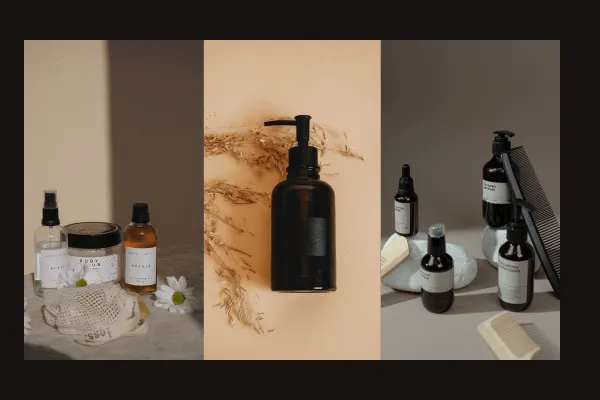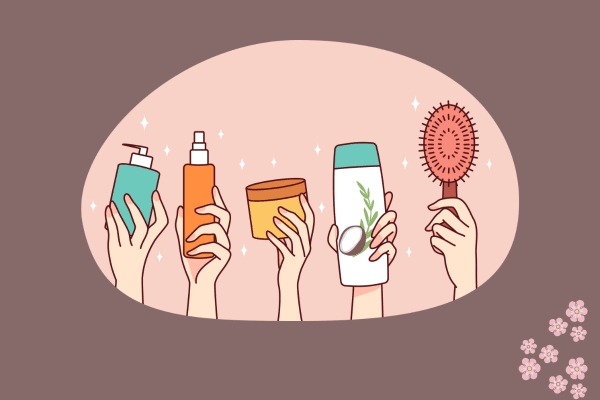Why choose DIY Skincare Remedies?

DIYs are a simple and natural solution in today’s world. You don’t need to purchase expensive scrubs or face masks, you can easily make them at home naturally and make your skin healthy and glowing. DIYs are budget-friendly, customizable, safe, and gentle, and most importantly, DIYs are sustainable and environment-friendly. DIYs are not just a beauty ritual, they’re a self-care activity where you find time for yourself.
DIYs always use simple ingredients. You don’t have to buy expensive serums; you can easily make them yourself with honey, turmeric, curd, and Aloe vera.
Using actives on your skin is not that bad, but if you aren’t chemical-friendly, you can go with DIYs without any hesitation. Most importantly, you know your skin well, so you can make DIYs according to your preference.
Warning while making DIYs
• Patch tests are always important
Before doing any DIY, take a little bit of the mixture and apply it to your wrist or behind your ear. If you feel redness, itching, and burning, then don’t apply it to your face.
• Not every natural ingredient is safe in DIYs
Everything natural is not skin-friendly, like
a) Lemon – it has an acidic property, which can make your skin burn or pigmented.
b) Baking Soda – Baking soda can imbalance the pH level and make your skin dry and irritated.
C) Toothpaste for Pimples – It’s completely a myth; it can damage your skin.
• Maintain hygiene in any DIY
Bacteria can grow if you have dirty containers, unwashed hands, and old ingredients. While making DIYs, everything should be clean.
• Don’t store DIYs for a long time
Most of the homemade DIYs doesn’t contain preservatives, which is why they get spoiled easily. Make fresh DIYs and use them within 2-3 days, especially scrubs and masks.
• Have extra cautions if you have sensitive skin – Use ultra-gentle DIYs if your skin is already reactive (like with redness, Breakout, sensation, etc.)
Some Skincare DIYs you can try at home
1. Aloe Vera + Turmeric Spot gel (for acne-prone skin)
Take 1 tbsp Aloe vera gel and a pinch of turmeric, mix them, and apply to your pimples. You can leave it overnight or for 30 minutes, then rinse it with water.
Benefits: calm redness, soothing and anti-inflammatory, reduces pimples.
2. Honey + Banana (for dull skin)
Take 1 tbsp of honey and 1/2 ripe banana (mashed), then make a smooth paste and apply it to your full face. Wash your face after 15-20 minutes. Use these DIYs twice a week.
Benefits – Provides instant glow, removes dryness, and makes skin soft and hydrated.
3. Honey + Oatmeal soothing mask (for sensitive and dry skin)
Take 1 tbsp honey and 1 tbsp oats or oatmeal powder and a few drops of rose water (optional), mix them, and apply to your face for 10-15 minutes. Then massage a little bit and wash your face.
Benefits – Soothes the skin, gently exfoliates, and moisturizes the skin.
4. Green tea toner (for oily and combination skin)
Take 1 green tea bag and 1/2 cup of water, boil the green tea and cool it, and store it in the fridge in a spray bottle. And use it as a toner.
Benefits – Tightens up the pores, controls oil, and prevents acne.
5. Curd + Rice flour scrub (for gentle Exfoliation)
Take 1 tbsp rice flour and 1 tbsp curd, then mix in a circular motion and make a paste and scrub gently for 2 minutes, then rinse it with cool water.
Benefits – Brightens up the skin, provides a natural glow, and removes dead skin.
If you want to know about acids, then read this article.
Which DIYs are best for your skin?

1. For oily skin:
DIY – Rose water + Fuller’s earth (mulatani mitti)
Why?
Absorb excess oil, Rose water soothes skin, use once or twice a week (avoid over-drying).
2. For Tired and Dull skin
DIYs – Gram flour (Besan) + curd – instant glow pack
Why?
Gram flour cleans the skin, and Curd brightens and exfoliates the skin. Use it a few times a week to brighten up your skin.
3. For Acne-Prone skin
DIYs – Turmeric + Aloe vera – Spot treatment
Why?
Turmeric fights with inflammation and bacteria; on the other hand, Aloe Vera heals pimples. Apply only on acne areas and on active pimples (patch test is important)
4. For sensitive skin
DIYs: Honey + Oatmeal – Soothing mask
Why?
Honey has antibacterial properties and gently calms the skin, and oatmeal calms the Irritation. Use once a week.
5. For dry skin
DIYs: Honey + Banana – hydration mask
Why?
Honey provides hydration; on the other hand, banana softens and moisturizes the skin.
Though every mask is a good choice but if you want to go with one, then I suggest Aloe vera and honey Mask because it hydrates, heals, and soothes the skin, and suits almost every skin type. Apart from that, you can easily find honey and aloe vera.
Remember –
• A patch test is very important
• Avoid Baking soda, lemon, or toothpaste on your face
• Use fresh ingredients
Skincare DIY You Should Avoid

1. Sugar as face scrub – Sugar granules are sharp, which creates microtears on the face, which can make your skin inflamed or rough, so don’t use sugar directly if your skin is acne-prone or sensitive.
2. Glue or Peel-Off Charcoal DIYs – Glue and Fevicol are very trending nowadays, but they are not skin-friendly. This process extracts natural oil from your skin, which can damage your skin.
3. Cinnamon face mask DIYs – Cinnamon is a strong spice that can burn your face, cause redness, and an allergic reaction. Many people face severe irritation because of that.
4. Baking soda – Baking soda’s pH level is different from the skin’s pH level; baking soda can damage your skin barrier. You can face irritation, redness, dryness, and breakouts by using baking soda on your skin.
5. Lemon directly on face – Lemons have citric acid, which can imbalance the skin pH level. Exposure to sunlight causes pigmentation or chemical burns.
6. Toothpaste on Pimples – Toothpaste contains fluoride, menthol, and harsher chemicals, which make your skin burn or dry out. Toothpaste doesn’t make pimples dry out; it leaves red marks on the skin.
Conclusion:
How much DIY is natural, but you need to do a patch test first. Less is more; having simple and fewer ingredients is sufficient in your DIYs. Don’t overload the ingredients. DIYs are without preservatives, so don’t store them for a long time. Sun protection is important. there are some DIYs that can cause skin sensitivity, so sunscreen is important after DIYs. Natural remedies take time to give results, so don’t expect overnight results. Consistency and gentle DIYs provide you results. A little bit of research, a little bit of patience, and with consistency, with these 3 things, you can build a lovely relationship with your skin.



